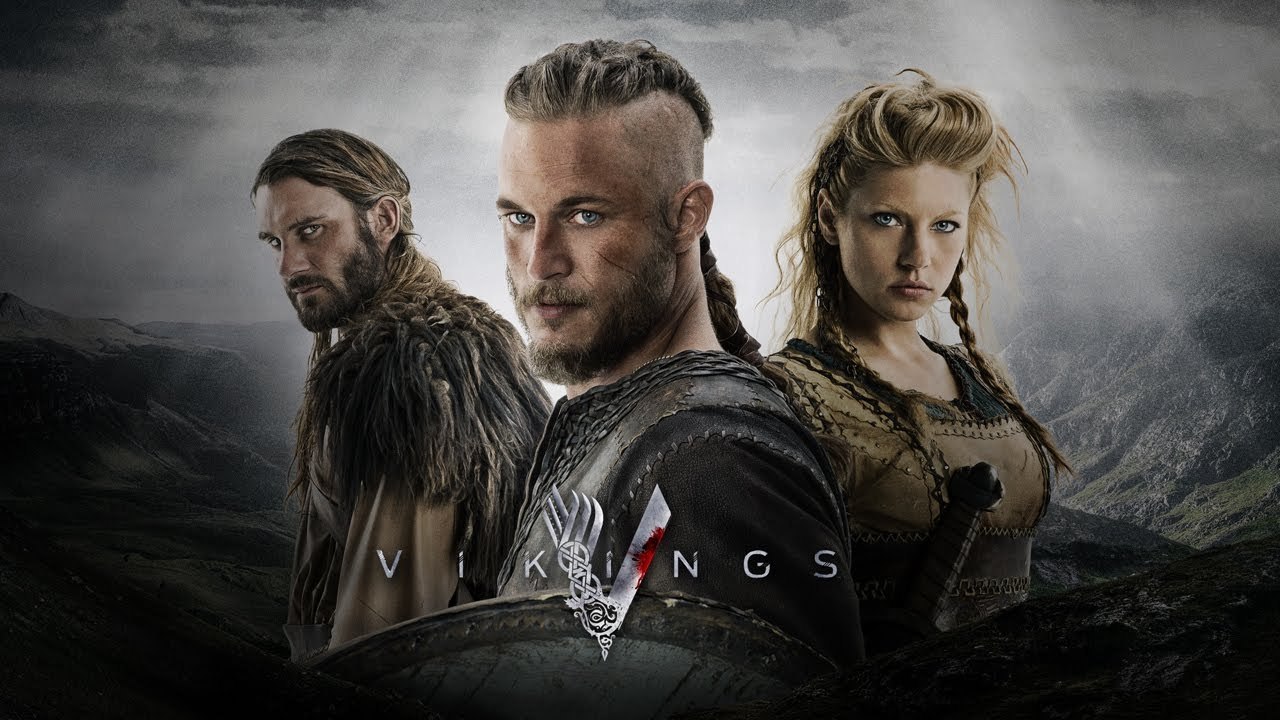“Vikings” (2013-2020)

Michael Hirst’s epic historical drama “Vikings,” which aired from 2013 to 2020, transports viewers to the brutal yet fascinating world of Norse mythology, exploration, and conquest. Set during the Viking Age, the series chronicles the rise of legendary figures such as Ragnar Lothbrok, Lagertha, Bjorn Ironside, and others as they navigate the complexities of power, ambition, and cultural clash in medieval Europe.

At its core, “Vikings” is a saga of exploration and expansion, depicting the Norsemen’s daring voyages across the seas to raid and settle in distant lands. The series begins with Ragnar Lothbrok, portrayed with charismatic intensity by Travis Fimmel, a farmer and skilled warrior who defies tradition and embarks on expeditions to the West. His quest for exploration and discovery leads to encounters with new civilizations, including the Anglo-Saxons in England and the Franks in France, setting the stage for epic battles and political intrigue.
One of the series’ strengths lies in its rich characterization and exploration of complex relationships. Ragnar Lothbrok’s dynamic with his wife Lagertha, portrayed by Katheryn Winnick, exemplifies themes of love, loyalty, and resilience amidst the tumult of Viking society. Lagertha emerges as a formidable shield-maiden and ruler in her own right, challenging gender norms and earning admiration for her strength and leadership.

Thematically, “Vikings” delves into the clash of cultures and ideologies as Norse paganism encounters Christianity and other belief systems. The series explores the spiritual beliefs of the Vikings, their rituals, and their relationship with gods such as Odin, Thor, and Loki. This juxtaposition of faiths adds layers of complexity to the characters’ motivations and actions, driving the narrative forward with themes of destiny, fate, and the quest for immortality through legacy.
Visually, “Vikings” captivates audiences with its stunning cinematography and visceral battle sequences. The show’s production design authentically recreates the harsh landscapes of Scandinavia, the bustling markets of Kattegat, and the majestic courts of England and France. The costumes, weaponry, and intricate set pieces immerse viewers in the visceral world of medieval warfare and political intrigue.

Beyond its action and spectacle, “Vikings” also explores themes of power dynamics and the consequences of ambition. Characters such as Ragnar’s ambitious sons—Bjorn Ironside, played by Alexander Ludwig, and Ivar the Boneless, portrayed by Alex Høgh Andersen—struggle to carve out their own legacies while grappling with their father’s formidable shadow. The series delves into the complexities of leadership, betrayal, and the sacrifices required to achieve greatness in an unforgiving world.
Music plays a crucial role in enhancing the emotional resonance of “Vikings,” with composer Trevor Morris creating a haunting and evocative score that underscores the characters’ triumphs and tragedies. The music effectively heightens the drama and tension of key moments, whether in intimate character interactions or in large-scale battle sequences.

In conclusion, “Vikings” stands as a landmark in television history, blending historical accuracy with compelling storytelling and memorable characters. Michael Hirst’s meticulous research and attention to detail, coupled with stellar performances and breathtaking visuals, ensure that the series captivates audiences with its exploration of Viking culture, mythology, and the enduring quest for power and glory.
Through its exploration of human ambition, cultural clashes, and the bonds of loyalty and kinship, “Vikings” resonates as a timeless saga of conquest and exploration, offering viewers a gripping glimpse into the tumultuous world of the Norsemen and their enduring legacy in history.










